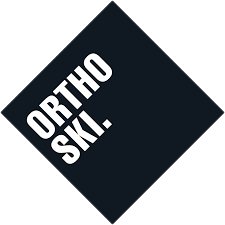Shin bang
The pain of sore shins, or shin bang, in ski boots will put an end to your day skiing, faster than you can say "I'll be at the bar". But even worse, shin pain can put an end to your whole ski holiday if not dealt with.
Shin bang baby, what a pain in the leg. Symptoms include a feeling of bruising, burning, blistering, throbbing, all at the front of your lower leg, aka, your shin.
SHIN BANG, WAHHH???
Shin Bang Rub, Shin Bang Strain, Shin Bang Pinch or Shin Bang Bang- what's your cup of tea?
Shin Bang Rub feels like a burning on the contact areas of the shin and may even end up causing blisters. This happens when the shin rubs against/across the tongue of the boot. Rubbing can be caused by lack of stability in the foot and the ankle rolling in (pronating) too much. This causes a twisting of the tibia and torsion of the lower leg.
Shin Bang Strain is a result of over working the muscles in the front of the lower leg. This typically happens when a skier is leaning back, either because the boot is too stiff or, because the boot is too soft and doesn't support the skier forcing them to lean back. See our post on boot flex for more about the mechanics of this here.
Shin Bang Pinch is not really part of the shin bang family but gets an honorary mention due to its locale. This is the result of the shape and/or volume of the tongue and cuff of the boot not being appropriate to your leg shape, resulting in a pinch at one or both sides of the tongue.
Shin Bang Bang is the big daddy of shin bangs and the one that sounds simple enough to lend its name to the group of issues as a whole. Shin Bang Bang feels like someone that doesn't like you, greeted you with a baseball bat to the shins..... 3 times a day. It's caused by the boot being too stiff and your shins, quite literally, banging into the front of the boot. This is made exponentially worse if the boot is too big and contact is concentrated at the top of the tongue.
CAUSES OF SHIN BANG IN SKI BOOTS
Oh, there are so many possible causes. Let's take a look at the three most common.
1. The tongue of your boot isn't fitting you properly. Even contact along the shin and front of your ankle is uber important for your ski boot to function and fit properly. If you're not getting even contact, it will put all the pressure at the top of the boot and everytime you lean forward to initiate a turn it will bang, bang-bang! until it's bruised and sore.
2. The tongue of your boot isn't fitting properly AND the boot is too soft. The same issue as above, with the tongue not fitting properly, but the boot is also too soft. This means you lean forward and it flexes too much and basically collapses under you. So you can't trust your boot and lean backwards too much, dorsiflexing (lifting the front of your foot upwards) and straining the tibialis anterior muscle that runs up along the front-outside of your shin. So now you're getting a bit of bruising plus straining that tib. ant. muscle which is now slightly inflamed and tender to touch (you can check this by resisting the dorsiflexing movement and seeing if that reproduces the pain).
3. Your foot is pronating too much. This is when your foot rolls in and collapses. It can come from the rear of the foot or (most commonly) the midfoot. When the foot pronates excessively, the tibia twists inwards. When the tibia twists constantly in a ski boot, this creates friction on the front of the shin and can cause blisters or rub wounds (can feel like a burn too).
THE FIX
1. If the tongue of your boot isn't contacting evenly from top to bottom, it needs to be adjusted. This could be done by adding padding to the front, lower section of the tongue, or it may need tongue surgery - repositioning the entire tongue and re-stitching it back in. Best to get a bit of help from your friendly boot fitter with this one
2. If the liner of your tongue doesn't fit right but your boot is too soft, don't bother about adjusting the tongue because if your boot is too soft and it's causing this type of issue (the strained tibialis muscle) then you need a new, stiffer flex boot. You can stiffen the flex of a boot by about 10%. This can be done by bolting the back of the cuff or putting a stiffening plate in the front of the cuff, but this will only improve it a wee bit. If you've got strained muscle from your soft boot, then you just need a new boot.
3. If you have blisters or skin rubbing on the top of your shin, you're getting twisting and friction from your leg twisting in the boot. To fix this, firstly you need to stabilise and support your foot better with a good custom ski orthoses and checking the fit around the rest of the boot.
These are just some of the causes and fixes for shin pain in a ski boot. To fix boot problems, the foot and its function needs be assessed as a whole within your boot. If your sore shins are stopping you enjoying your skiing, go and see a good boot fitter for assessment and fix. Quick, now!

